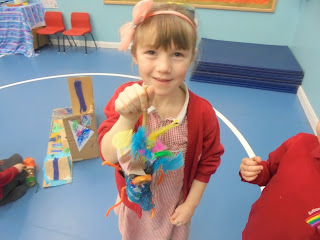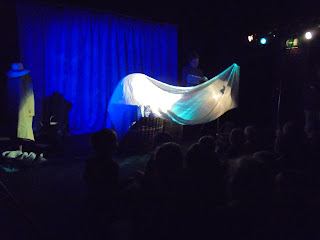What an exciting week we have had in Orange Class! On Monday and Tuesday, the Puppet Theatre team came to Sutton to follow up from our school trip a few weeks ago.
The workshop began with some drama. The children thought travelled through a range of imaginary habitats, thinking about how they should move depending on the terrain and their surroundings. They joined in with the narrative, helping to describe habitats.
Later, they became animals within the habitats, thinking about the adaptations each animal would have, linked to our science work.
The children were challenged to create an animal that was a mixture of two animals from the same habitat. For example, Emma made a 'bat bear' from a cave and Lucy made a mixture of a whale, shark and turtle from the sea.
Next, the children had to work together to create a stage area in which their own and their group's puppets could live. I have to say that they children were incredibly considerate, sharing resources and ensuring everyone's ideas were included, which can be tricky at this age. The Puppet Theatre team were very impressed and they made our school very proud.
Later, we got to making our puppets! It was fab and the children really loved using such exciting materials and seeing their designs come to life...
Of course we then had a go at putting on our own shows and even used our puppets to retell some stories we knew already.
On Wednesday's drop and read session, I shall ask Mrs Scott who is covering to have this work displayed for the children to share with you and they may take their puppets home. Maybe they could put on a show for you? Have a lovely weekend.























































